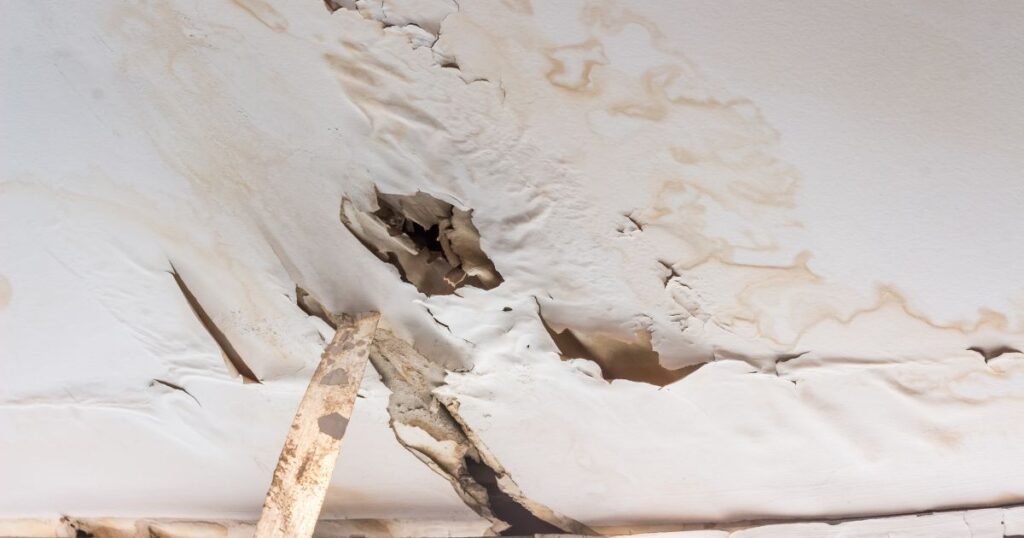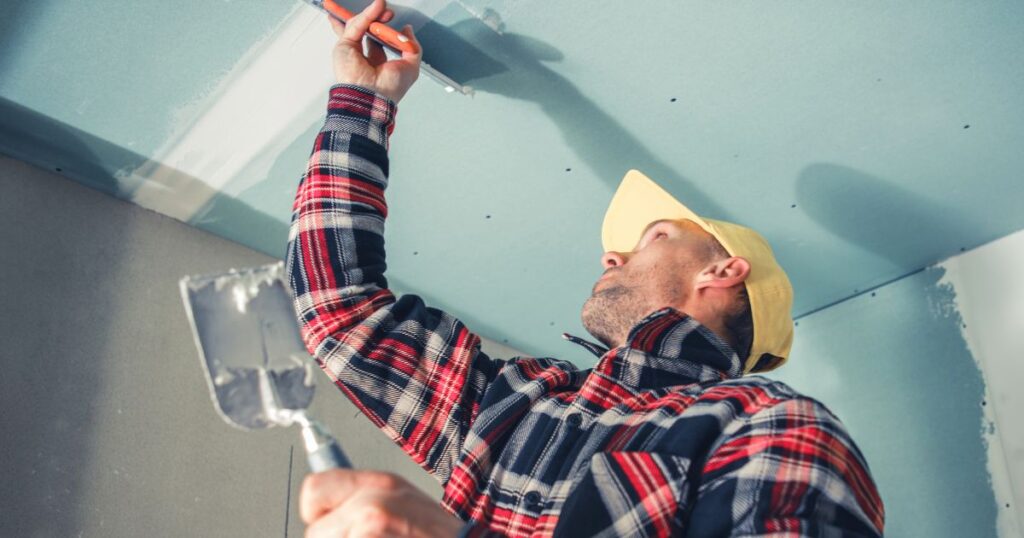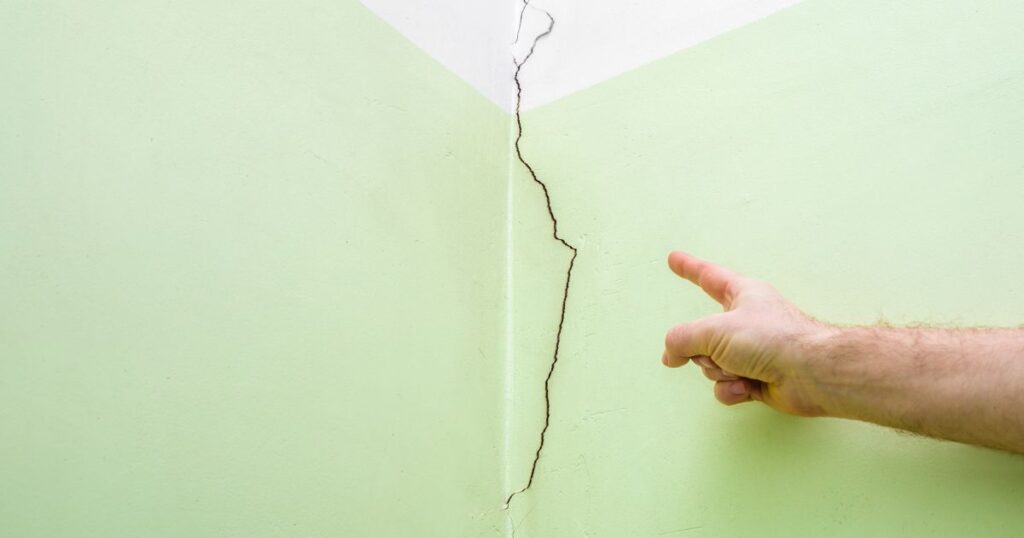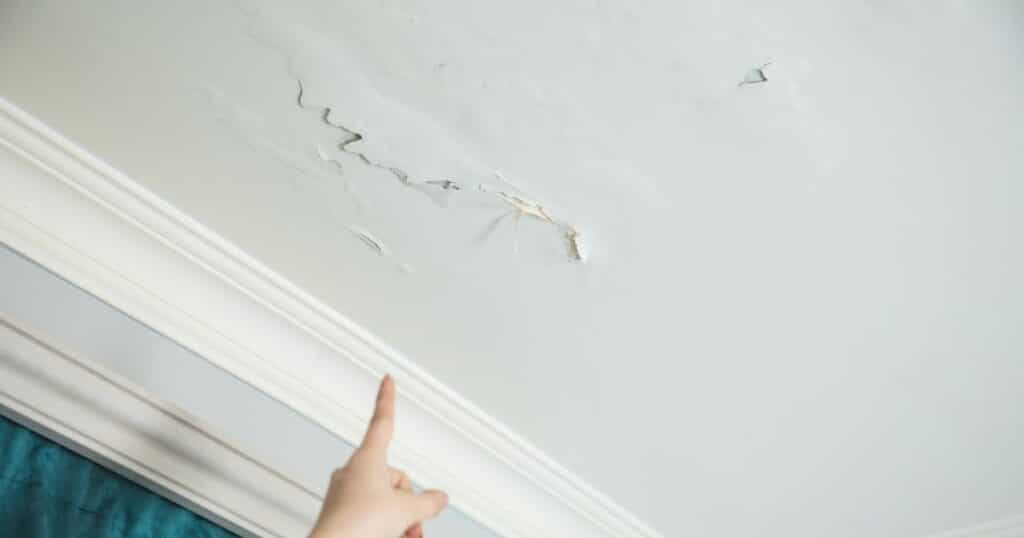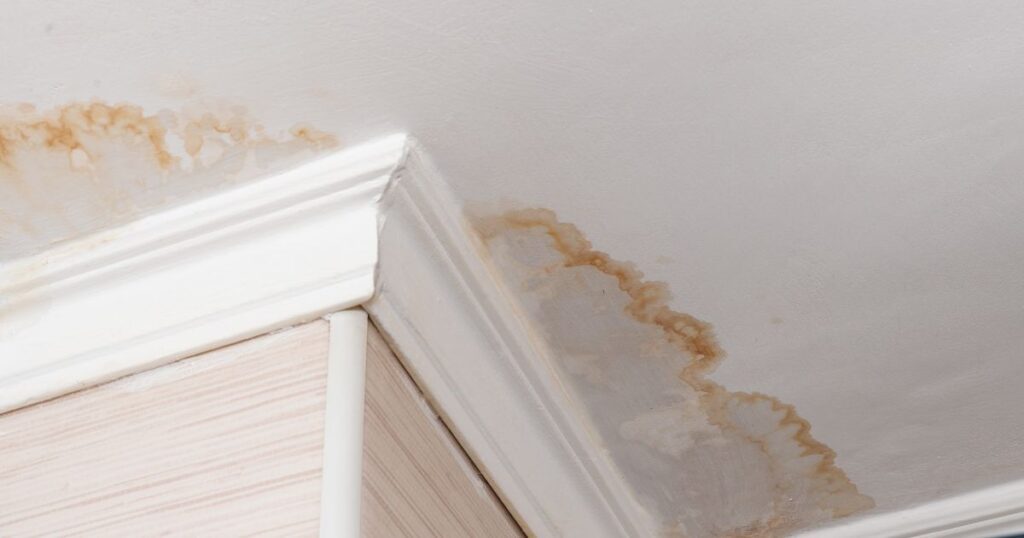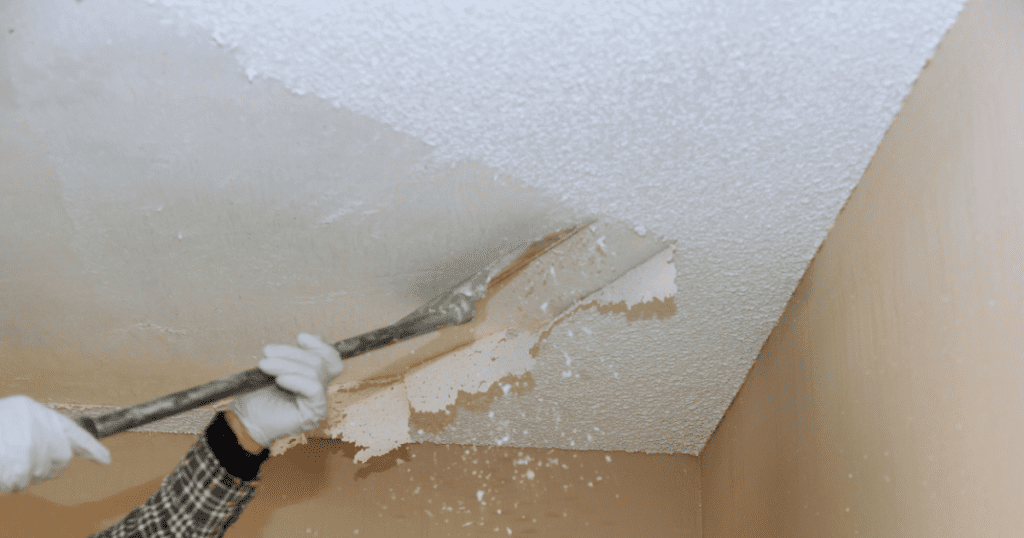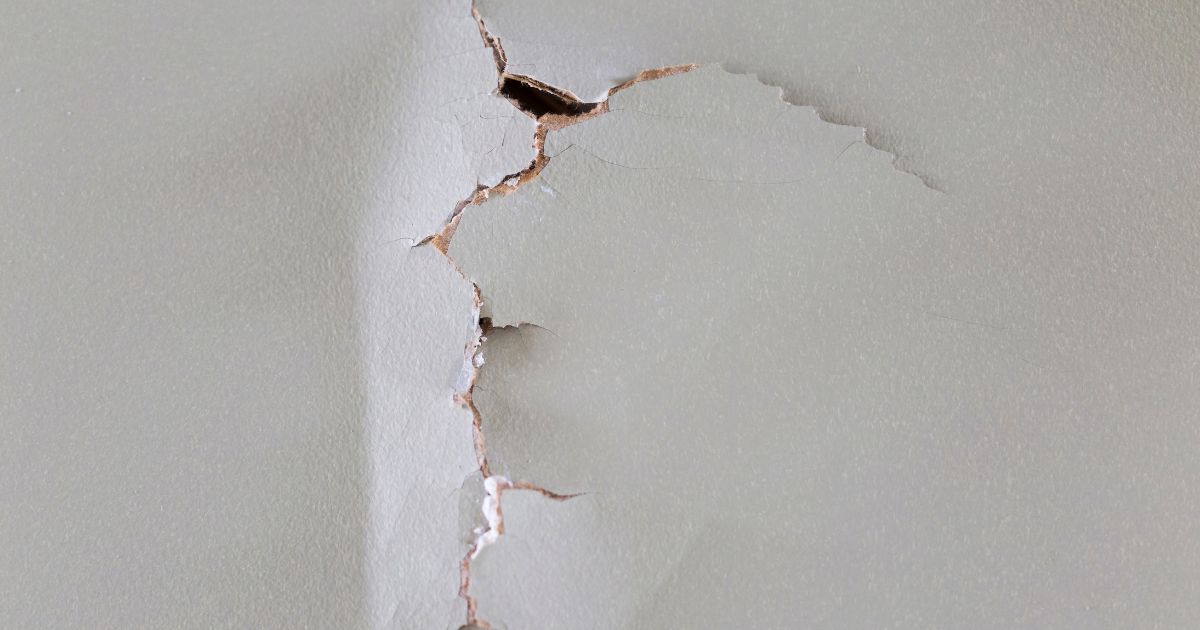
The Importance of Repairing Cracks in Drywall: Don’t Neglect Your Walls!
Drywall cracks may seem like an inconsequential issue, but ignoring them can lead to more significant and costly structural damage over time. Whether you’re dealing with hairline fractures or those that have been caused by accidents, it’s essential to repair cracks in the drywall as soon as possible. Besides, why would you let unsightly cracks detract from the beauty of your home?
As much as we’d like to think that our walls are invincible, they’re not. Regular wear and tear, fluctuations in temperature and humidity levels, and even the settling of your foundation can all contribute to cracks appearing on your walls.
But don’t let this discourage you! With the right tools and techniques, repairing drywall cracks is a manageable DIY task that anyone can do. Learn how to repair crack in drywall in this step-by-step guide.
The Step-by-Step Process for Repairing a Crack in Drywall: Mudding and Taping with Confidence
Before jumping right into repairing the crack in your drywall, it’s essential to take some preparatory steps first. You’ll need a few materials for this project:
- Sandpaper
- Joint compound
- A putty knife
- A paintbrush
- A dry cloth
Once you’ve gathered all the necessary tools and materials needed for crack repair, you can begin preparing your wall surface by cleaning it thoroughly.
Make sure there is no loose paint or debris around the area you will be working on. Next up is mudding!
This step involves applying a joint compound over the crack with a putty knife. One important tip here is not to apply too much joint compound at once; instead, layer it on gradually until any gaps or holes are filled completely.
After mudding comes taping. Taping involves putting a strip of mesh or paper tape over the joint compound, smoothing it out with your putty knife, and then letting it dry for about 24 hours.
Once the tape is dry, you can apply another layer of joint compound over the tape and let that dry as well. Now comes sanding, which involves using sandpaper to smooth out any rough edges or bumps on your repaired surface.
The goal here is to have a seamless transition where the crack was before. It’s time for a paint touch-up after repairing cracks!
Once any dust from sanding has been wiped away with a clean cloth, you’re ready to paint! Make sure you choose a color that matches your existing wall color.
Preventive Measures for Drywall Cracks: Stop Them Before They Happen
While knowing how to repair cracks in drywall is essential knowledge to have as a homeowner, preventing cracks from forming in the first place should be your ultimate goal. One way to do this is by keeping an eye on temperature and humidity levels in your home. Fluctuations in these levels can cause walls to expand and contract, leading to cracks.
Another preventive measure for avoiding cracks in drywall is by reinforcing corners with metal corner beads or mesh tape. These materials add extra protection against movement caused by settling or shifting foundations.
Repairing cracked drywall may seem like an overwhelming task at first glance, but it’s a manageable one that anyone can do with the right tools and techniques. By following these steps carefully and taking preventive measures where possible, you’ll be able to keep your walls looking beautiful and sturdy for years to come!
Assessing the Damage
Inspect the Crack to Determine Its Size and Severity
Before beginning any repair work, it is essential to examine the crack thoroughly. The size and severity of the crack will determine what steps you need to take.
A hairline crack can easily be fixed with a small amount of joint compound, while a more extensive crack may require more in-depth repairs. One simple trick to assess whether or not your crack is severe is to hold a flashlight against the wall at an angle.
This will cast shadows that will help you determine how deep and wide the crack runs. It’s also important to check if there is any movement in the drywall around the area of the crack.
If there is, it could indicate a structural issue that needs professional attention. However, for most DIY drywall repair projects, you can focus on cosmetic repairs without worrying about deeper issues.
How to Identify Whether or Not It’s a Structural Issue
Identifying whether or not your cracked drywall is indicative of structural damage requires careful observation. You must look for signs such as sagging ceilings or shifted walls that may suggest an underlying issue. If you suspect your cracked drywall has structural implications, it’s best to contact an expert as soon as possible.
Failing to do so could result in further damage down the line and end up being costly in both time and money. However, if you’ve determined that your cracked drywall only requires cosmetic repairs, congratulations!
You are ready for DIY drywall repair! Regardless of how extensive or minor your cracks are though, it’s essential never to ignore them.
Small cracks inevitably get more significant over time if left unattended and run the risk of compromising both aesthetic appeal as well as overall structural integrity over time. Now that we have assessed our damage let’s move onto gathering materials needed for our DIY drywall crack repair.
Best practices for fixing cracks in walls involve tackling the issue as soon as you spot it before it gets any bigger. It’s essential to use the right tools and materials to ensure a successful repair that lasts for years to come.
Gathering Materials
List Out All Necessary Materials Needed for Repair
Before diving into the complex world of drywall crack repair, it’s important to gather all the necessary tools and materials.
One may think that this is the easy part, but it can be difficult to determine what’s needed for the job if you’re not familiar with drywall repair. First and foremost, you will need a joint compound.
Don’t skimp on quality here! You want a joint compound that is easy to work with and dries evenly.
Additionally, don’t forget about sandpaper — this will come in handy when smoothing out rough edges or bumps in the joint compound. You’ll also need a taping knife, which is used for applying and smoothing out the joint compound.
It’s important to get one that is appropriately sized for your project; anything too small or too large could result in uneven coverage. Next up: drywall tape!
This will be instrumental in keeping your repair strong and stable over time. Be sure to purchase self-adhesive tape rather than paper tape, as it’s much easier to work with.
Other necessary materials may include a putty knife (used for scraping off excess joint compound), a sanding block (to smooth any rough edges), and primers/paints (for finishing touches). **
Offer Creative Alternatives For Materials That May Not Be Readily Available
We’ve all been there — you’re ready to start repairing your drywall crack, but you realize you’re missing a crucial tool or material. Before throwing in the towel and giving up on your project altogether, consider some creative alternatives.
For instance, if you don’t have sandpaper on hand, try using an emery board instead (yes, like what you use on your nails!). It may take longer than traditional sandpaper, but it will get the job done in a pinch.
If you don’t have drywall tape, try using a strip of mesh or fiberglass tape instead. Yes, it’s not ideal — but it will work in a pinch!
And, of course, if you don’t have joint compound on hand, try making your own using materials that are readily available in your home. For instance, mix together some flour and water to create a paste-like substance.
While this won’t be as strong as a traditional joint compound, it can work in certain situations. At the end of the day, while having all the correct tools and materials is important for optimal results when fixing drywall cracks, sometimes creativity is key!
Preparing the Surface
Don’t Just Jump In
So you’ve identified a crack in your drywall and want to get it fixed. That’s great!
But before you go slapping on the joint compound, take a step back and prepare the surface properly. This will ensure that your repair job sticks and stays put over time.
A Clean Surface is Key
The first step in preparing the surface is to clean it thoroughly. This means removing any dust, debris, or loose plaster around the crack. Use a dry cloth or vacuum cleaner to remove any dust particles that could prevent the compound from adhering properly.
Next, wet a cloth with warm water and mild soap and use it to clean around the crack. You want to make sure any dirt or grime is removed because this can also prevent proper adhesion of the joint compound.
Sanding for Smoothness
After cleaning, use fine-grit sandpaper to smooth out any rough edges around the crack. Any bumps or ridges will be noticeable even after painting, so make sure to take your time with this step.
When sanding, be gentle so as not to cause further damage or widen the crack. If necessary, use a putty knife to scrape away any loose bits of drywall paper.
The Implications of Skipping This Step
Skipping these steps may seem like an easy way out but beware – taking shortcuts will only lead to further cracks down the line. Not only that, but if you don’t prepare your surface properly before mudding and taping your damaged wall surface or filling cracks in drywall, there’s no guarantee that they won’t come back as soon as you’re done fixing them up! So take heed: Do not skimp on preparing surfaces prior to repairing wall cracks!
Applying Joint Compound
The process of applying joint compound over the crack
Filling and sanding cracks in drywall can be tricky, but applying joint compound is where the real magic happens. This is where you get to see your crack transform into a smooth, seamless wall.
Before starting, make sure you have all the tools and materials needed for drywall crack repair, such as a joint knife, sandpaper, and of course, the joint compound. Clean off any debris from the area with a damp cloth before starting.
Using your joint knife, apply a thin layer of joint compound over the crack. Don’t worry if it looks messy at first – we’ll clean it up later.
Make sure you fill in every nook and cranny of that crack with the putty knife. A common mistake people make is leaving air pockets in their mud application: always check for air pockets before moving on to sanding.
Tips on how to create a smooth finish
Once you have applied sufficient joint compound over the drywall crack, it’s time for some finesse work: use your putty knife or trowel to taper off excess mud from around the edges of your patchwork. If there are any uneven spots after this step or bubbles due to trapped air or improper tool application (e.g., not spreading at an adequate angle), scrape them away with gentle but firm pressure.
Be patient when working with larger areas- take it one section at a time! You want to avoid leaving any high spots or ridges; these bumps will be noticeable once painted over, even if they seem minor initially.
Sanding is an important next step in achieving that smooth finish look from mudding over those ugly cracks in your wall. Once again, start at one corner and work downward across your repair area using progressively finer grits the more you sand, such as 80-grit, 120-grit, and finally, 220-grit.
This will help avoid leaving any rough spots when touching up those repaired areas. With these tips in mind, your patched drywall crack should look smooth and seamless.
Don’t be too eager to skip this step, or you’ll end up with an unsightly wall patch that sticks out like a sore thumb. In the next section, we’ll talk about the final steps to ensure all your hard work pays off: painting touch-ups for your restored cracked drywall.
Sanding and Painting
Prep Work is Key: How to Sand Down Any Rough Edges Before Painting
So, you’ve taken the first crucial step in repairing your drywall crack. You assessed the damage, gathered all necessary materials, and applied joint compounds over the crack.
But now what? The next step is sanding down any rough edges before painting.
This may seem like a no-brainer, but don’t be tempted to skip this step in your haste to finish. First and foremost, make sure that the joint compound is completely dry before sanding.
Use fine-grit sandpaper (120 or higher) and gently sand down any bumps or ridges until they’re smooth with the surrounding wall. Be sure to wipe away any dust or debris with a damp cloth before moving on to painting.
Color Me Impressed: Creative Painting Techniques and Color Schemes for Your Repaired Wall
You’ve repaired your drywall cracks like a pro, but now you’re left with a wall that looks patched up and out of place compared to its surrounding walls. Fear not – there are plenty of creative painting techniques and color schemes you can use to make your repaired wall blend seamlessly with its surroundings.
One option is to create an accent wall by using a contrasting paint color or texture on the repaired area. Alternatively, you could use stencils or decals to create an eye-catching design over the patch job.
If you want a more subtle approach, consider using a paint roller with textured foam, which will create small dimples in the paint for added depth and dimension. Whatever approach you take, be sure to carefully match colors so that there isn’t an obvious difference between your newly-painted patch job and the surrounding walls.
Paint Touch-Up after Repairing Cracks: The Final Piece of Your DIY Drywall Crack Repair
You’ve finished sanding down any rough edges and have successfully blended your repaired wall with its surroundings. But there’s one final step to ensure your repair job looks professional: paint touch-up.
Using a small paintbrush, carefully apply a thin layer of paint over the newly-repaired area, blending it in with the surrounding wall. Be sure to allow ample drying time between coats, and don’t be afraid to do multiple coats if needed.
Remember that painting is an art form, so take your time and pay attention to detail. The goal is for your repair job to look as seamless as possible – which means taking the time for proper prep work and painting.
Tips for Restoring Cracked Drywall Like a Pro
While repairing cracks in drywall may seem daunting at first, it’s a task that can be easily accomplished with the right tools and techniques. Proper prep work, such as cleaning and sanding down rough edges before painting, will ensure that your repair job looks professional and blends seamlessly with its surroundings.
Don’t be afraid to get creative with color schemes or patterns when repainting your repaired wall. With the right approach, you can turn what was once an eyesore into an accent piece in any room.
Remember that patience is key when tackling DIY drywall crack repair – rushing through any step can lead to shoddy results. Take your time, follow best practices for fixing cracks in walls, and you’ll soon have a beautifully restored wall that will last for years to come!
Final Touches
Seamless Integration with Texture Spray
So, you’ve fixed your drywall crack, and you’re feeling pretty good about yourself. But wait just a minute – it’s not enough to simply repair the damage; you need to make sure that the repaired area blends in seamlessly with its surroundings.
One way to achieve this is by using texture spray. Texture spray is an easy-to-use product that can be applied over your newly repaired area to create a texture that matches the rest of your wall.
Simply spray it on and let it dry, and voilà – a beautifully uniform surface! Texture spray comes in various finishes, so make sure to choose one that matches the texture of your existing walls.
Adding Trim for a Professional Look
If you’re looking for an even more professional finish for your DIY drywall crack repair job, consider adding trim. Crown molding or baseboards can cover up small imperfections while also adding visual interest to your space. To add trim after repairing the crack, begin by measuring and cutting pieces of molding or baseboard to fit the length of the wall where you’ll be placing them.
Next, paint or stain them as desired before attaching them to the wall with adhesive or finishing nails. If necessary, fill any gaps between the trim and wall with caulk before touching up any paint or stain.
Paint Touch-Up Techniques
After filling and sanding cracks in drywall, it’s time for some touch-up painting. But how do you make sure that your repair doesn’t stand out like a sore thumb?
Here are some tips:
- Start by using high-quality paint from a reputable brand.
- Use a small brush or roller instead of trying to cover everything at once.
- Apply multiple thin coats instead of one thick coat.
- Blend the edges into surrounding areas by feathering the paint outwards.
- Don’t be afraid to create a faux finish to mask any imperfections.
Restoring Integrity with Mudding and Taping
If your drywall crack is more severe, you may need to use mudding and taping techniques to restore its integrity. This involves embedding mesh tape over the crack before applying the joint compound. Once the compound has dried, sand it down and repeat the process until the surface is level and smooth.
To achieve a seamless finish when mudding and taping drywall cracks, be sure to apply even pressure when smoothing out the joint compound. Avoid pressing too hard or leaving behind air bubbles that can create an uneven surface.
Preventive Measures for Future Cracks
While repairing cracks in walls is a necessary task, it’s always better to avoid them altogether if possible. To prevent future cracking in your drywall, consider using best practices such as:
- Installing additional support beams where needed
- Applying sealant around windows and doors
- Avoiding excessive humidity or temperature fluctuations
- Using high-quality materials for construction
- Hiring professionals for structural repairs
By taking these preventive measures, you’ll be able to enjoy smooth walls without having to worry about unsightly cracks in drywall ever again!
Frequently Asked Questions
Can you just paint over drywall cracks?
Painting over drywall cracks is not recommended as a standalone solution. Cracks in drywall should be properly repaired by filling them with joint compound or drywall mud, allowing it to dry, sanding the surface, and then applying paint for a seamless finish.
What happens if you paint directly on drywall?
If you paint directly on drywall without proper preparation, the paint may not adhere well, resulting in an uneven and unattractive finish. Additionally, any imperfections, such as drywall seams or surface defects, may become more apparent when painted directly without proper treatment.
What type of cracks can be repaired?
Various types of cracks in drywall can be repaired, including hairline cracks, minor settlement cracks, stress cracks, or cracks resulting from temperature or moisture fluctuations. However, the severity and cause of the cracks should be assessed to determine the appropriate repair technique.
What happens if drywall cracks?
If drywall cracks are left untreated, they can worsen over time, potentially compromising the structural integrity of the wall. Cracks may widen, extend, or lead to further damage, such as water intrusion or the development of mold.
How do you fix hairline cracks in drywall?
Hairline cracks in drywall can be repaired by applying a thin layer of joint compound or drywall mud over the crack, feathering it out, allowing it to dry, and then sanding the area. Multiple applications and sanding may be necessary for a seamless finish.
What causes drywall to crack?
Drywall can crack due to various factors, such as structural movement, settling of the building, temperature, and humidity fluctuations, improper installation, or inadequate flexibility of joint compound or drywall tape. Identifying the underlying cause is important for effective repair and prevention of future cracks.
Conclusion
So there you have it, a complete guide to tackling drywall cracks. Remember that it is essential to assess the damage before beginning the repair process. Once you have determined what materials and tools are necessary, you can start preparing the area around the crack.
After applying the joint compound and letting it dry, it’s time to sand down any rough edges and prepare for painting. Be sure to add any final touches that will make your repair look seamless with its surroundings.
It’s no secret that DIY drywall crack repair can be daunting, but taking preventive measures for drywall cracks is worth your while. It’s important to note that structural implications of drywall cracks should not be ignored and should only be done by professionals.
With these best practices for fixing cracks in walls in mind, anyone can restore integrity to cracked drywall. Don’t be afraid to take on this task; just remember that mudding and taping drywall cracks require patience and attention.
Patching and filling drywall cracks doesn’t have to be a tedious ordeal either. By following these techniques to repair wall cracks step-by-step, anyone can fix their cracked walls like an expert.
Repairing cracked drywall may seem intimidating at first glance but with the right tools and materials needed for crack repair by your side, you’ll soon find yourself completing this task with ease. With a little bit of dedication combined with these simple steps for repairing drywall cracks under your belt, you’ll soon have smooth walls once again!

